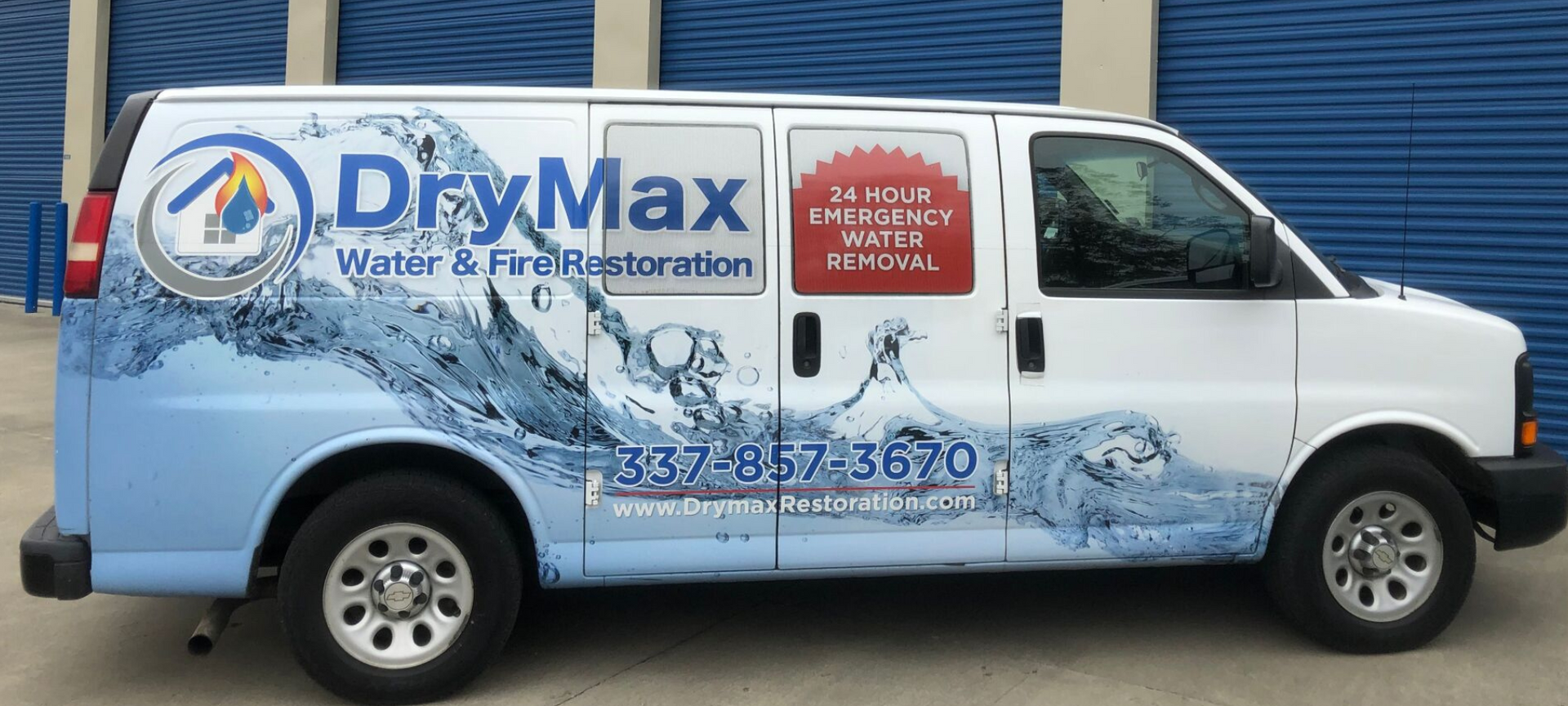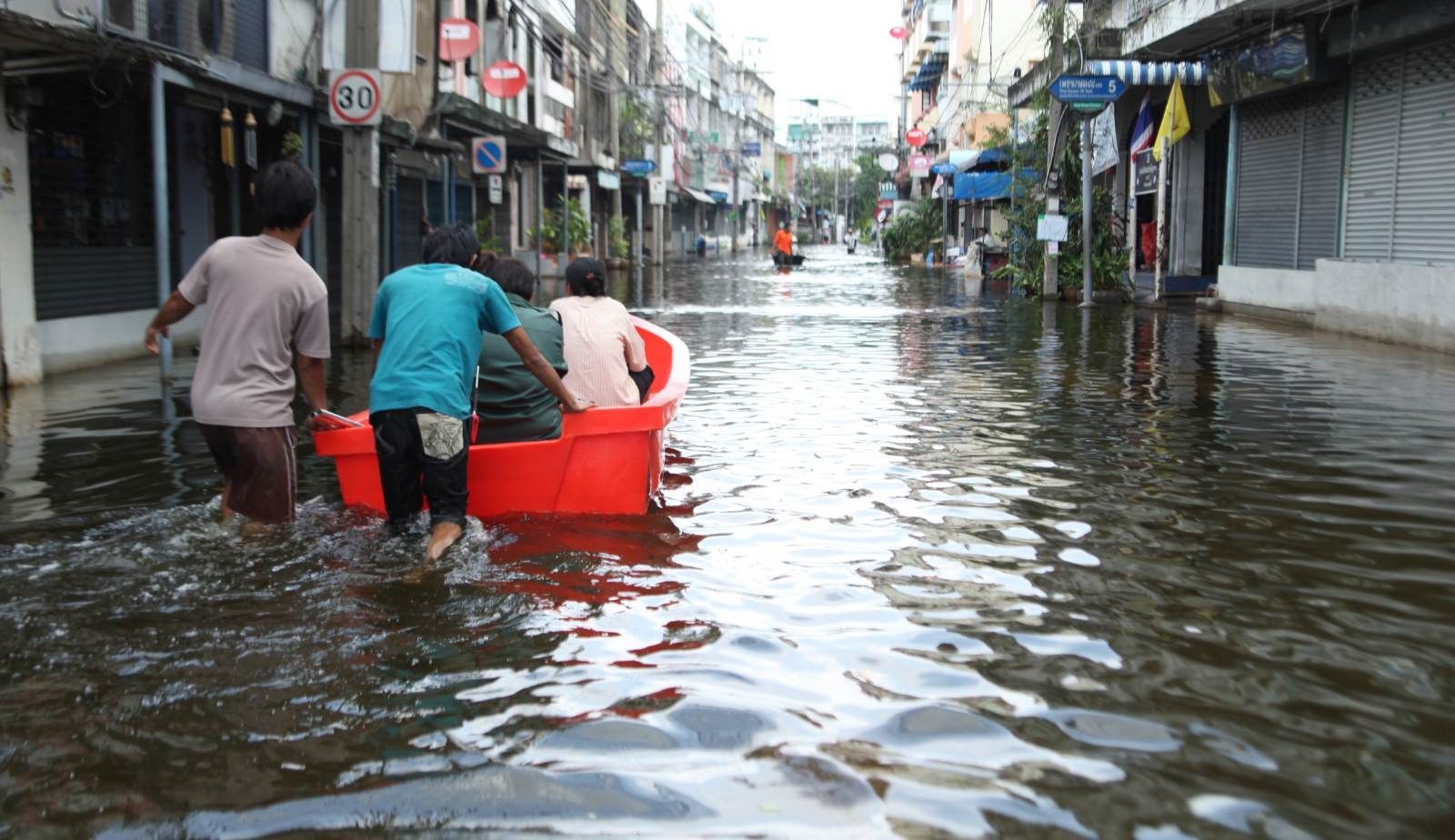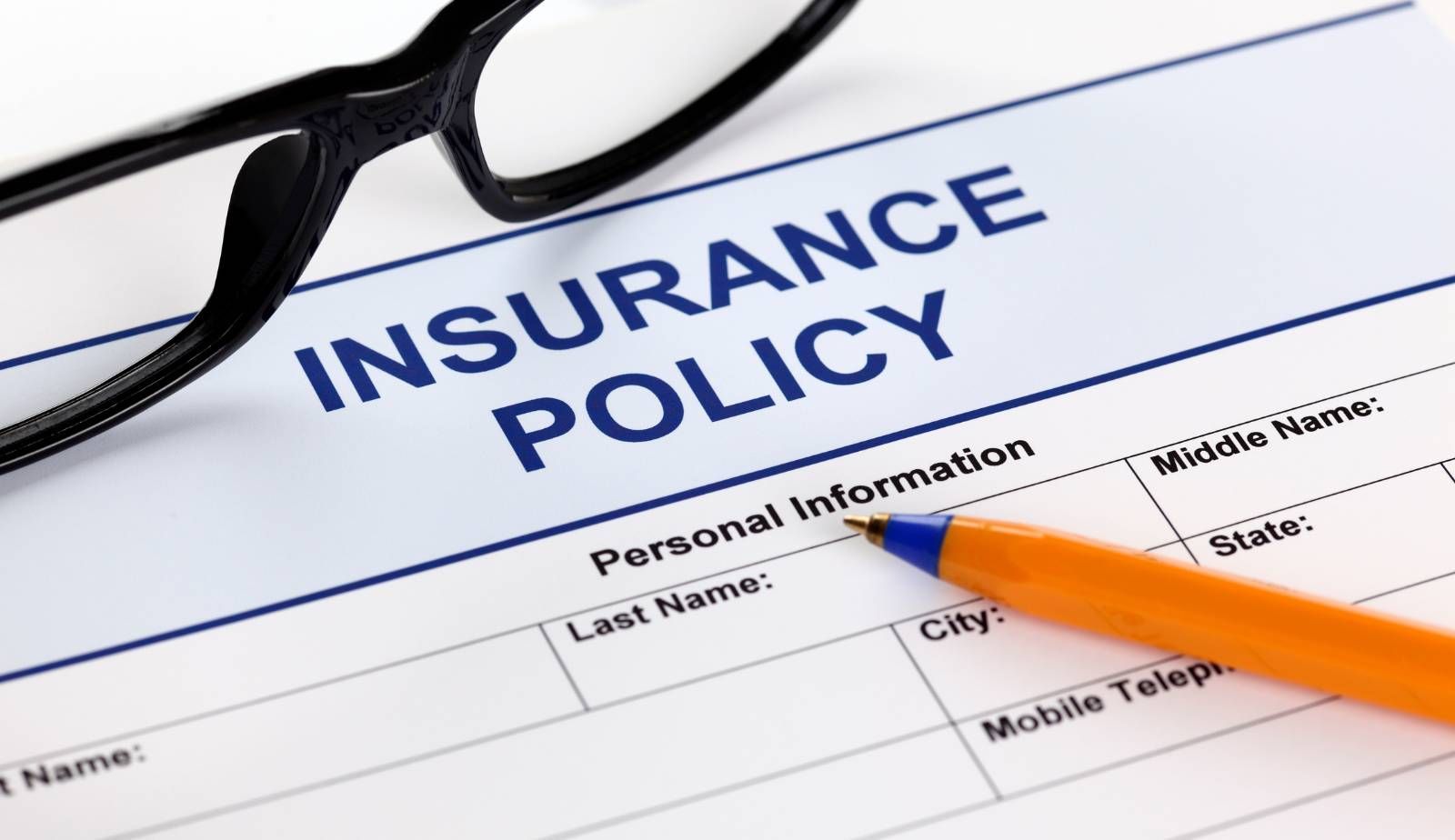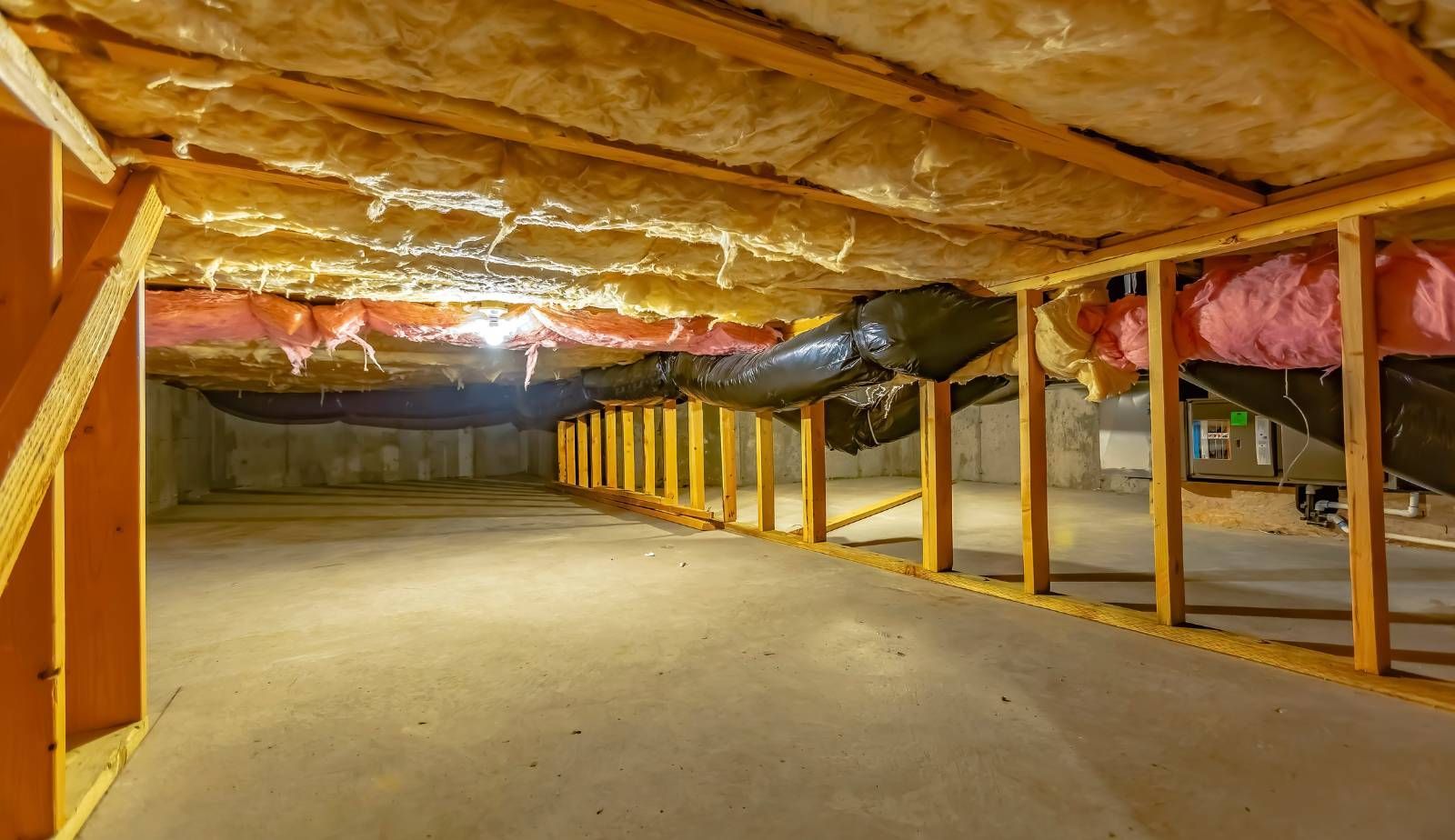A Comprehensive Water Damage Checklist to Follow Immediately After A Water Leak or Flood
Water damage can be one of the most difficult and destructive events a Lake Charles, LA homeowner can experience.
It can happen for many reasons, such as a leaky pipe, a broken appliance, or a sewer backup. Regardless of the cause, there are specific steps you must take to minimize the damage until a professional can assess the situation. Here is a comprehensive checklist to help you care for the short-term and long-term integrity of your home.
- Step 1: Find the Source of the Water
The first thing you need to do after discovering standing water in your home is to locate the source of the water. You should stop the water immediately to prevent further damage to your home and belongings. This may mean turning off the water supply to your home or calling a professional for help.
- Step 2: Move Valuables / Turn Off Power to Home To prevent further damage, you need to take preventative steps to protect your home and belongings. Turn off the power in your home to avoid electrical hazards. Move your valuables to an area that was not exposed to water or to a friend or family member's house until your home is restored.
- Step 3: Contact Your Insurance Company Once you have the situation under control and your home is no longer in immediate danger, contact your insurance company. Get a quote so that you have an idea of what will and will not be covered. Ask them for a list of companies that they have contracts with to help you in your process. Be sure to take pictures of everything so that there is no question later about what was damaged or not.
- Step 4: Repair the Water Damage Water damage can cause severe damage to your home, so start the repairs as soon as possible to prevent mold and structural damage. Contact a water damage restoration company like DryMax Water - Fire - Mold Restoration to help you clean and repair your home properly.
- Step 5: Dry Your Home It is crucial to start drying out your home as soon as possible. This means removing water and using fans to get rid of the humidity present in the home. You can use a variety of different equipment like a wet-vac or dehumidifiers to help. Let the fans run for a few days to remove all humidity and help get your home back to normal. (Do not use fans or dehumidifiers in rooms with verified mold).
- Step 6: Check for Mold Mold can grow within 24 hours after water damage. Inspect your house thoroughly for mold in the carpets, behind floor trim, walls, drywall, flooring and more. Contact a professional mold remediation company like DryMax Water - Fire - Mold Restoration to look for mold and help you remove it if it is discovered.
- Step 7: Returning to Your Home During the entire repair and remediation process, you may need to stay at a hotel or with family and friends. It may take a few weeks to get your home back to normal. Try not to live or move back into your home until it has thoroughly been inspected for mold or structural damage. Once you are given the 'all clear' you can move back in.

Water damage in Lake Charles, LA can cause severe health complications in addition to home damage if left untreated.
It may not appear as a major issue right away, but should always be taken care of as soon as possible. Use this guide to help you navigate through one of the most frustrating and overwhelming home situations you can experience as a homeowner.
Contact DryMax Water - Fire - Mold Restoration and we can help you through this situation.
You might also like
DryMax Restoration Blogs

Flash floods pose a significant threat to homes in Louisiana, often leading to extensive water damage in basements, foundations, and lower-level rooms. These sudden storms can unleash overwhelming amounts of rain, overwhelming drainage systems and causing water to seep into vulnerable areas of a home. Understanding how these rapid weather events create risks allows homeowners to take proactive steps to protect their properties. When heavy rainfall occurs in a short period, the soil cannot absorb water quickly enough, leading to runoff that can infiltrate basements and ground-level spaces. In many cases, this results in soaked carpets, damaged drywall, and compromised structural integrity. Homeowners should be aware that the threat of flooding is not solely during hurricane season; significant flash floods can occur even during spring showers. Additionally, the impact of these storms can extend beyond immediate water exposure. Erosion around the foundation can result in long-term stability issues, making it essential to address any signs of water intrusion immediately. Recognizing the connection between sudden storms and their potential for damage is crucial for safeguarding homes against the devastating effects of water. Understanding Flash Floods in Louisiana Flash floods in Louisiana occur rapidly, often resulting from sudden storms and tropical systems. Factors such as heavy rainfall , the state's unique climate , and geographical features contribute significantly to the flood risks faced by residents. What Causes Flash Flooding Flash flooding is primarily caused by intense rainfall that exceeds the ground's absorption capacity. It can also result from the failure of a dam or levee, or from rapid snowmelt. In Louisiana, the rainfall intensity can be overwhelming, particularly during hurricane season . The National Weather Service frequently issues alerts during severe weather events to warn residents about potential flash floods. During such events, water can accumulate in a matter of minutes, trapping individuals and damaging properties. Louisiana's Unique Climate and Flood Risks Louisiana experiences a humid subtropical climate, characterized by long, hot summers and mild winters. This climate fosters heavy rainfall, especially in late summer and early fall when tropical storms are most likely to occur. Climate change further exacerbates these conditions by increasing the frequency of intense storms. This results in an increased flood risk, particularly in urban areas where paved surfaces prevent proper drainage. The notion of a floodplain becomes essential, as areas frequently subject to flooding are increasingly prone to severe water damage. The Role of Hurricanes and Heavy Rainfall Hurricanes dramatically increase the risk of flash flooding in Louisiana. As these storms approach, they bring not only strong winds but also significant rainfall and storm surges. When hurricanes make landfall, torrential downpours can result in excessive runoff, overwhelming local drainage systems. Storm surge forecasts are critical in preparing for the impact, as flooded coastal areas can inundate neighborhoods quickly. Impact of Low-Lying Topography and Proximity to Waterways Louisiana’s geography, with its low-lying topography, plays a crucial role in flood dynamics. The state's elevation is often insufficient to allow for effective drainage, particularly after heavy rainfall. Additionally, the proximity to waterways such as rivers and bayous can worsen flood conditions. Urban flooding becomes a major concern, as construction and development frequently limit natural water absorption. Properties located in these vulnerable areas face heightened risks during severe weather events.

Many homeowners in Louisiana may not realize that standard homeowners insurance often does not cover water damage from floods. It is critical for homeowners to understand that while certain types of water damage may be covered, floods typically require a separate flood insurance policy. This gap in knowledge can lead to significant financial losses when unexpected events occur. To prepare for the unexpected, homeowners should ask specific questions about their insurance coverage . They must inquire about the types of water damage included in their policy, any exclusions related to flooding, and the process for filing claims . Understanding these elements can help property owners safeguard their homes and finances. Being proactive about insurance coverage can make a substantial difference in recovery efforts after water damage events. With the right information and preparation, homeowners can navigate the complexities of their policies and ensure they are adequately protected. Understanding Water Damage and Homeowners Insurance Water damage can stem from various sources and impact homeowners significantly. Understanding the coverage offered by homeowners insurance can help residents prepare for potential risks and navigate their policies effectively. Types of Water Damage Covered Homeowners insurance typically covers specific types of water damage that occur suddenly and accidentally. For example, damage from a burst pipe or an accidental overflow of water from appliances may fall under the policy’s coverage. These events are often categorized as “perils” in home insurance terms. It’s essential to note that coverage can vary widely among policies. Homeowners should review their policy documents to confirm the limits and conditions stated. Additionally, some insurers may include specific endorsements for added protection against water-related risks. Common Causes: Burst Pipes, Heavy Rainfall, and Accidental Overflow Several scenarios can lead to water damage in a home. Burst pipes are among the most common causes, usually resulting from freezing temperatures or aged plumbing. Homeowners should inspect their plumbing regularly and consider insulating pipes in vulnerable areas. Heavy rainfall can also lead to significant water damage. If drainage systems fail or gutters overflow, water may seep into the home. In Louisiana, it's vital to monitor weather conditions and maintain proper home drainage. Accidental overflow from appliances, such as washing machines or dishwashers, may occur due to malfunction or user error. This type of damage is often covered by homeowners insurance, but claims should be filed immediately to ensure proper documentation. What Your Home Insurance Policy Might Exclude Homeowners must be aware of common exclusions in their insurance policies, especially concerning flood damage. Standard policies in Louisiana typically do not cover damage caused by floods, necessitating supplemental flood insurance for adequate protection. Additionally, damage from gradual leaks or wear and tear is generally not covered. Homeowners should regularly maintain their property to prevent issues that may lead to water damage. Before filing a claim, individuals should review their policy thoroughly to understand exclusions and required conditions for coverage. Knowing what is not covered can prevent misunderstandings during the claims process. Flood Damage: Separating Flood and Water Damage Coverage Understanding the distinctions between flood damage and general water damage is crucial for homeowners in Louisiana. This knowledge helps in evaluating coverage needs for specific risks associated with their property. Key considerations include the nature of the damage, applicable exclusions, and how to navigate insurance options effectively. Why Flooding Is Treated Differently Flooding is classified distinctly from other types of water damage due to its widespread impact and the nature of its occurrence. Unlike water leaks from roofs or plumbing, flooding typically arises from external sources such as heavy rain or rising rivers. This distinction is significant because many standard homeowners insurance policies do not cover flood damage. Instead, coverage for floods often requires a separate flood insurance policy, usually through the National Flood Insurance Program (NFIP). Homeowners in flood-prone areas must recognize these differences to avoid costly surprises in the event of a disaster. Understanding Flood Exclusions in Homeowners Policies Typical homeowners insurance policies exclude damage from flooding. Such exclusions specifically pertain to losses caused by rising waters, such as floodwaters entering homes during storms or significant weather events. For example, damage from groundwater seepage or overflow from rivers is generally not covered. The Federal Emergency Management Agency (FEMA) outlines these exclusions to ensure homeowners are aware of their limitations in coverage. It is essential for homeowners to read their policies carefully and confirm with their insurance agents about the specifics of any flood exclusions . This clarity ensures they can take appropriate measures to obtain necessary coverage. How to Obtain Flood Insurance Obtaining flood insurance involves several key steps. Homeowners can purchase a policy through private insurers or directly through the NFIP. It’s important to assess the flood risk of the area to determine the appropriate coverage amount. Many communities participate in the NFIP, allowing residents to access federally backed flood insurance. When applying, homeowners must provide specific information about their property, including its location and elevation. Additionally, potential policyholders should consider factors like waiting periods and coverage limits. Always be aware that flood insurance typically has a 30-day waiting period before coverage takes effect, meaning it’s wise to act well ahead of potential flooding events.

Crawl space flooding is a prevalent issue in Louisiana due to the region's high humidity and frequent heavy rains. Understanding the causes and risks associated with crawl space flooding is crucial for homeowners seeking to protect their property. From poor drainage and leaky pipes to the rising water tables, these factors can lead to significant damage if left unaddressed. Moreover, the implications of a flooded crawl space extend beyond structural integrity. Mold growth, wood rot, and a compromised foundation can all result from moisture accumulation in these areas. Property owners must be proactive about managing their crawl spaces, especially in Louisiana's challenging climate. Drymax offers solutions tailored to combat the effects of high humidity and water intrusion. Their expertise in crawl space restoration equips homeowners with effective strategies to prevent flooding and mitigate damage. By exploring these restoration tips, individuals can safeguard their homes against the persistent threats posed by Louisiana's weather. Understanding Crawl Space Flooding in Louisiana Crawl spaces in Louisiana face unique challenges due to regional construction practices and environmental factors. The combination of heavy rainfall and high humidity creates an environment conducive to water intrusion and flooding. Understanding these elements is crucial for effective restoration. Typical Crawl Space Construction Most crawl spaces in Louisiana are built with wooden frameworks elevated above the ground, which can be susceptible to moisture. Ventilation is often incorporated to reduce humidity, but this method may not be effective during extended periods of heavy rains. As moisture seeps through soil, it can lead to standing water. In some constructions, plastic sheeting may line the ground, but improper installation can diminish its effectiveness against flooding. Understanding these construction nuances helps in addressing potential vulnerabilities. Regional Climate Factors The climate in Louisiana is characterized by high humidity and significant precipitation, particularly during the summer months. Heavy rains can lead to saturated soil, increasing the likelihood of water intrusion into crawl spaces. The warm temperatures further exacerbate moisture retention, promoting mold growth and structural damage. Homeowners must be aware of their local environments and take necessary precautions. Regular inspections can help identify potential risks before extreme weather events occur. Common Flooding Scenarios Several scenarios commonly lead to crawl space flooding in Louisiana. Heavy rainfall can overwhelm the drainage systems, leading to water accumulation. Faulty plumbing and leaky pipes also contribute to moisture problems. Additionally, runoff from heavy storms can cause ground saturation, pushing water into crawl spaces. Homeowners may also encounter flooding due to broken water heaters or improper grading around their property. Recognizing these scenarios can aid in prevention and prompt interventions.


